How Long It Takes to Learn Spanish for Travel

The length of time it takes to learn Spanish varies for everyone. It will depend on your language learning goals, your resources, and your study methods. But, in general, English speakers learn Spanish far faster than many other foreign languages.
In this article, we'll explore the different factors that could influence how fast a person learns a language in more detail. Of course, we also have to think about when a language is considered "learned."
Are you aiming for fluency or conversational proficiency? In basic terms, when do you decide that you have learned a language? Read on to unpick this big question.
How Do You Know When You Have Learned Spanish?
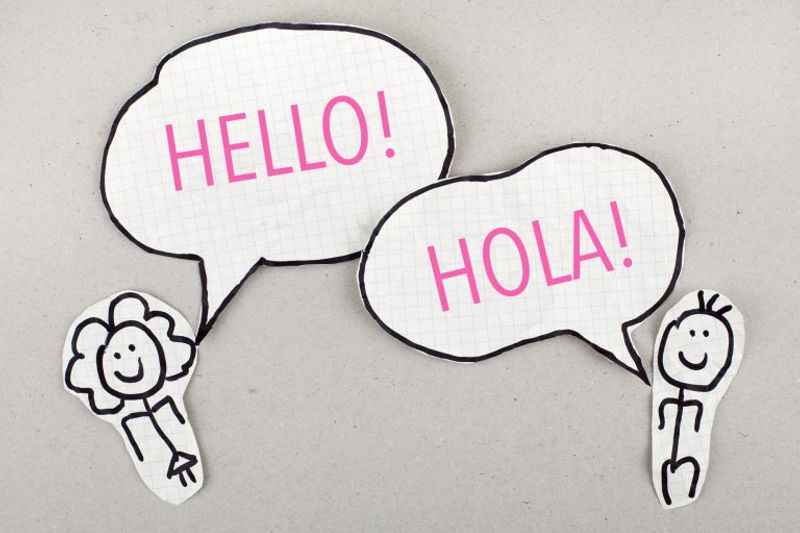
Feeling as though you have succeeded at learning Spanish will mean different things to different people. For some, this may mean being able to hold a simple, slow conversation with a native speaker, such as being able to order a meal at a restaurant with ease or asking for goods at a market easily.
For others, it is being able to converse entirely in the language confidently and at a normal speaking pace. They may want to have enough knowledge of the language to live and work in a town that speaks it.
Other people may define fluency or a "learned" language as being able to read, write and pronounce words without needing a dictionary to look them up. Or maybe it means that you can understand all aspects of the language such as jokes, cultural slang, and idioms.
Meanwhile, others suggest that the ability to convey your desired question, comment, want, or need to another speaker of the language in a way that they understand can still be interpreted as fluency.
How Long Until You Reach Conversational Fluency?

Reaching conversational level fluency in Spanish (or any other chosen language) is the aim of most language programs and apps that promise to get you speaking with confidence in a matter of weeks.
The time required to reach conversational proficiency in Spanish varies depending on various factors such as your prior language learning experience, the amount of time dedicated to study, and the intensity of your practice.
Generally, with consistent effort and immersion, it may take anywhere from several months to a couple of years to achieve a conversational level of proficiency. However, with an intensive course or a one-on-one tutor, it could take mere weeks.
For instance, Spanish Uncovered by Olly Richards provides a platform from which to progress your Spanish by simplifying Spanish grammar nice and early through story.
Effective Teaching Methods for Spanish

The most effective teaching method is one that will be manageable for the learner and will yield good results. It must instill learners with confidence, as well as motivate them to carry on with the learning.
It is common knowledge that the best way to learn something is by doing it for yourself. The same applies to languages. You can sit and watch videos of other people speaking Spanish all day, but you will not get very far with your speaking unless you practice speaking yourself.
You need to be immersing yourself in the language intensely and consistently, especially if you have the aim of learning it quickly.
Let’s put it this way: if you push yourself out of your comfort zone and try to hold a conversation in Spanish every day then you are likely to learn far more quickly and be better at it, too.
Trialed & Tested Learning Methods

Here is a short list of effective methods to learn Spanish:
1. Get a Spanish tutor that can tutor you one-to-one.
Hire someone who can dedicate the whole hour to you. Do these one-to-one classes as often as possible. At least once a week is essential, but twice will be even better. You can use a service called Italki.
This is a global language learning community that connects students and teachers for 1-on-1 online language lessons. More than 10,000 teachers are teaching more than 5 million students over 130 languages on the Italki platform. Get $10 Free Italki Credit
2. Alongside the one-to-one tutoring, you should also immerse yourself in Spanish in other aspects of your life.
Change your cell phone and computer settings to the Spanish setting, watch news reports in Spanish, and watch Spanish movies.
3. Get yourself a good quality Spanish learning app for your smartphone that will help you practice spelling, grammar, and vocabulary.
You can also use a flashcard app such as Memrise (or just physical flashcards if you prefer) to learn these things.
All of these teaching and learning methods work in tandem with each other. You cannot just download an app and expect to get results. Your tutoring should be the basis of your learning, and the rest can filter in when needed.
Intensity and Consistency in Spanish Learning
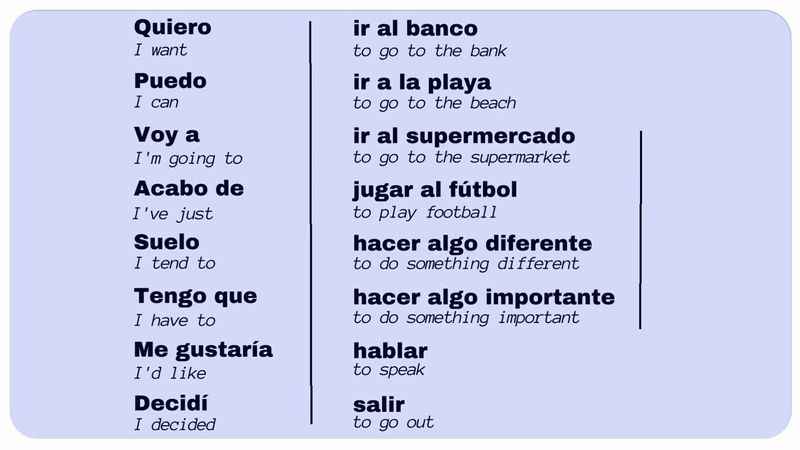
Strive for both consistency and intensity with your language learning. If you are serious about learning Spanish and you want to get results in a short amount of time, then it's worth it. The idea is that, in total, you should spend at least an hour a day learning Spanish.
The good news is that you can break it up through the day if you wish, or even average it out over the week. Learning languages involves homework (hey, no groaning please!), it involves watching TV in Spanish, and it involves incorporating Spanish into as much of your daily life as you possibly can.
You can listen to Spanish music, change the language of your phone to Spanish, and journal in Spanish for maximum exposure.
Spanish for Travel: Check Your Vocabulary

In this section, you will be provided with a comprehensive overview of the essential vocabulary and phrases you need to know for traveling in a Spanish-speaking country.
Whether you're planning a vacation or embarking on a business trip, being able to speak basic Spanish phrases and understand the Spanish language will greatly enhance your travel experience.
Here you can find a range of topics, including basic Spanish greetings, introductions, common expressions, and basic Spanish travel phrases.
By familiarizing yourself with these fundamental aspects of the Spanish language, you'll feel more confident and prepared to communicate effectively during your Spanish adventure.
Get ready to immerse yourself in the richness of the Spanish language and explore the wonders of your destination as you learn basic Spanish words.
Spanish in a Restaurant
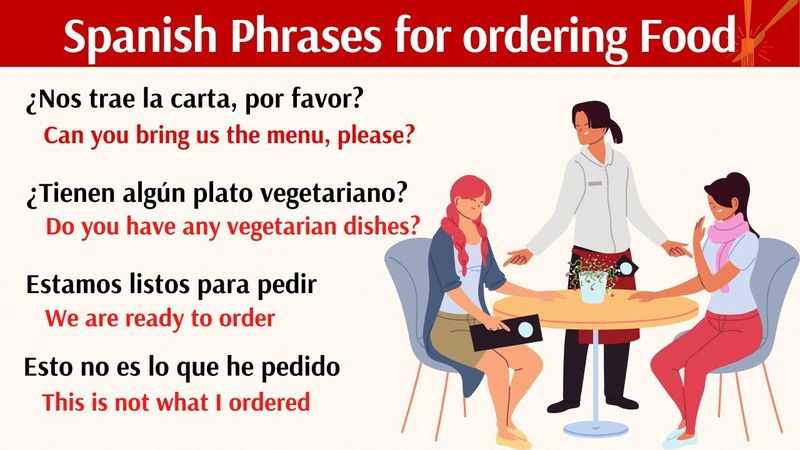
When dining out in Spanish-speaking countries, knowing a few key phrases can make your restaurant experience much more enjoyable. As you navigate a new language, remember that native speakers appreciate your effort to communicate in their language even if you have a beginner's Spanish skill.
Let's explore some common phrases you can use in a restaurant setting. Start your meal by greeting the staff with a friendly "¡Buenos días!" (Good morning) or "¡Buenas tardes!" (Good afternoon).
When ordering, you can say "Me trae la sopa, por favor" (Can you bring me the soup, please), or "Quisiera una ensalada" (I would like a salad).
To request the bill, simply ask for "la cuenta, por favor" (the check, please), and when they bring it over you can say "¡Mucho gusto!" in Latin America, or simply "Muchas gracias" in Spain (Thank you very much).
And if you need the WiFi password, politely ask, "¿Cuál es la contraseña del Wi-Fi?"
Remember, practicing these phrases will not only enhance your dining experience but also allow you to connect with the local culture and cuisine. ¡Buen provecho! (Enjoy your meal!)
Spanish at a Hotel
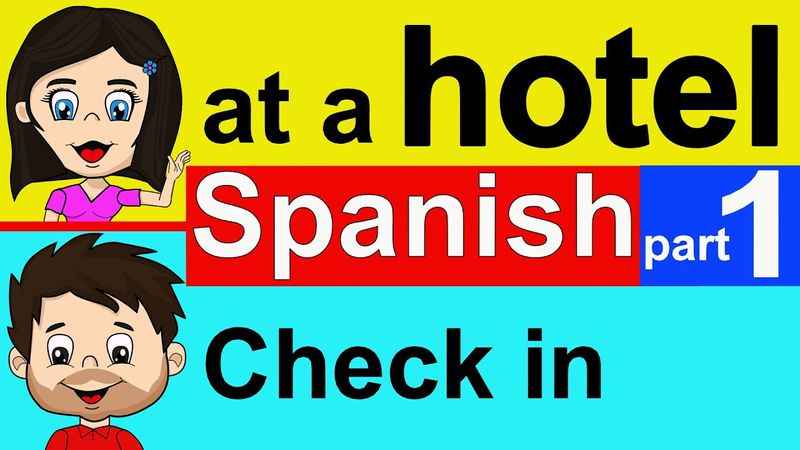
When staying at a hotel in a Spanish-speaking country, having some basic Spanish phrases and basic Spanish words at your disposal can greatly facilitate your communication with the hotel staff.
Let's learn vocabulary and some common phrases you can use during your hotel stay.
First, if you are looking for your hotel you can ask a local: "¿Dónde está este hotel?" and show them your reservation, or your "reservación".
At the "recepción" (reception), the "recepcionista" (receptionist) will give you a "llave" (key) for your "habitación" (room). Easy right?
You can ask the staff if they speak English: "¿Habla inglés?" (Do you speak English?) or you can state that you speak Spanish by saying "hablo español".
When it's time to settle in for the night, you can use phrases such as "¿Qué hora es el check-out?" (What time is check-out?) or "Buenas noches" (Good night).
These simple Spanish phrases will help you navigate your stay at the hotel and ensure a comfortable experience.
Spanish for Shopping
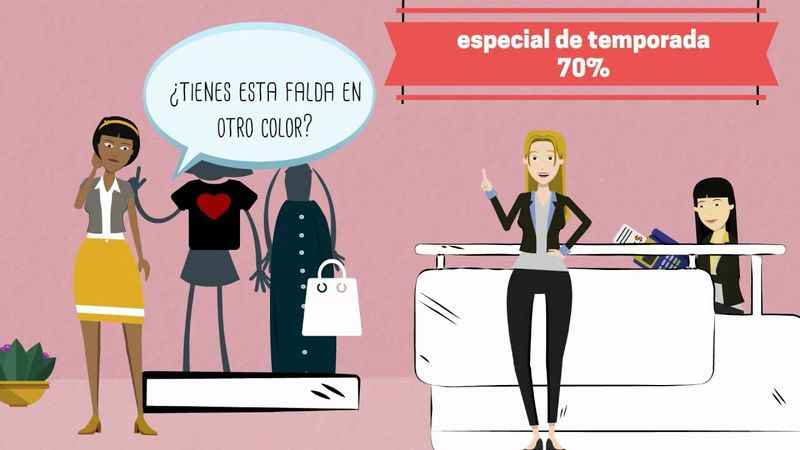
When exploring the vibrant markets and shops of a Spanish-speaking country, knowing some basic phrases can enhance your shopping experience. Whether you're on a Spanish learning journey or simply enjoying the local culture, here are some Spanish words for shopping in South America and beyond.
To begin, you can greet the shopkeeper with a friendly "¡Hola!" (Hello) or "Buenos días/tardes" (Good morning/afternoon). If you're looking for a specific item, you can ask "¿Dónde está...?" (Where is...) followed by the name of the item you're searching for.
When you find something you like, you can inquire about the price by asking "¿Cuánto cuesta?" (How much does it cost?). Remember always to be polite and use "por favor" (please) when making requests or asking for assistance.
If you're interested in trying on clothes, you can ask "¿Puedo probármelo/la?" (Can I try it on?) or "¿Dónde están los probadores?" (Where are the fitting rooms?).
Negotiating prices is common in some markets, so you can politely ask "¿Es el mejor precio?" (Is this the best price?) or "¿Me puede hacer un descuento?" (Can you give me a discount?). Remember, bargaining is a cultural practice in certain places, so be respectful and friendly during the negotiation process.
Lastly, don't forget to express your gratitude with a simple "Gracias" (Thank you) when making a purchase or receiving assistance. These phrases will help you navigate the shopping experience and connect with the local vendors during your Spanish-speaking adventure in Latin America.
Spanish Directions

When walking in a Spanish-speaking country, it's helpful to know some Spanish travel phrases to navigate your surroundings. Whether you're exploring nature or strolling through a city, here are a few common phrases to assist you.
To start, familiarize yourself with cardinal directions: "a la izquierda" (to the left) and "a la derecha" (to the right). These are the most important Spanish words that will come in handy when following directions or giving instructions.
Additionally, learning important Spanish words related to outdoor activities can enrich your experience. For example, "una cuadra" refers to a city block, "en la esquina" is "on the corner", and "derecho" means "straight on".
If you're looking for specific places or attractions, you can ask "¿Dónde hay...?" (Where can I find...?) followed by the name of the place or activity you're interested in.
Remember that communication is key, so don't hesitate to approach locals and ask for help or directions. Polite phrases such as "¿Puede ayudarme, por favor?" (Can you help me, please?) or "¿Me podría indicar cómo llegar a...?" (Could you tell me how to get to...?) will be appreciated.
This travel vocabulary is of great importance when improving your Spanish skills about travel phrases in particular.
Spanish at the Airport
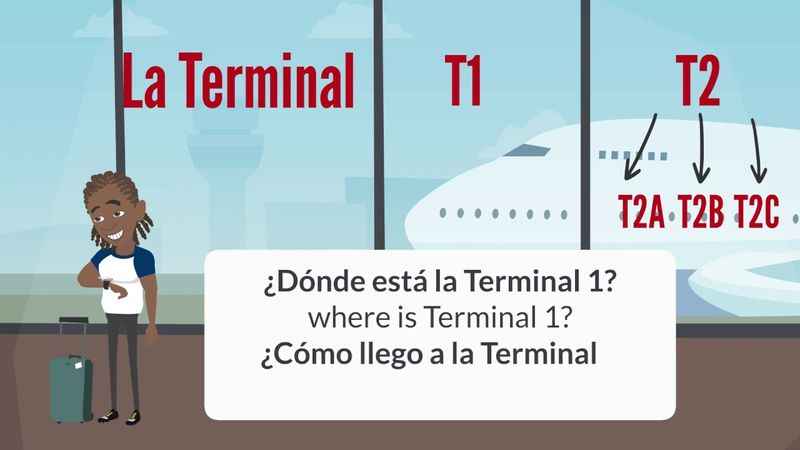
Navigating an airport in a Spanish-speaking country can be made easier if you speak a little Spanish. Whether you're checking in, going through security, or looking for your boarding gate, here are a few essential phrases to help you along the way.
First, "el aeropuerto" is the Spanish term for "the airport." When searching for the international terminal, ask "¿Dónde está la terminal internacional?" (Where is the international terminal?). For finding your gate, inquire about "la puerta de embarque" (boarding gate) or simply "la puerta" (gate).
By familiarizing yourself with these phrases, you'll be better equipped to navigate the airport and communicate with airport staff during your Spanish-speaking travels.
FAQs About Spanish Phrases for Travel
Let's take a look at some frequently asked questions about learning Spanish for travel.
How long will it take the average person to learn the basics of Spanish?
The time it takes to learn basic Spanish varies depending on factors such as prior language learning experience, dedication, and native tongue. On average, it may take several months for English speakers to acquire a basic level of proficiency in a work setting.
However, achieving native-level fluency requires years of consistent practice and immersion.
Can I learn Spanish in 3 months?
You can learn essential Spanish phrases for a trip abroad in just 3 months if you dedicate time and effort to your studies. Language learners can benefit from structured courses, online resources, and immersion experiences.
Free PDF guides and materials are available to supplement learning on a lot of language learning sites. You can also enjoy podcasts, social media channels, and music in Spanish to help you progress.
Do I need to speak Spanish to visit a Spanish-speaking country?
While it's not mandatory to speak Spanish when visiting a Spanish-speaking country, knowing basic Spanish can greatly enhance your experience. Speaking their native language facilitates communication with locals, enables better navigation, and shows respect for the culture.
Learning common words and phrases and greetings will make your trip more enjoyable and rewarding.
How can I learn basic Spanish words while traveling?
While traveling in Spanish-speaking countries, take advantage of the immersive environment to practice and enhance your language skills. Engage in conversations with locals, use Spanish travel phrases, and seek opportunities to communicate in Spanish.
Language exchange programs, cultural activities, and language learning apps can also facilitate learning Spanish travel phrases while on the go.
Some common and basic words and phrases you should know include:
- ¿Qué tal? ****- How are you?
- ¿Cómo estás? - How are you? (informal)
- ¿Cómo está? - How are you? (formal)
- ¿Cómo te llamas? - What is your name? (informal)
- ¿Cómo se llama? – What is your name? (formal)
- ¿Qué? – What?
- ¿Por qué? – Why?
- ¿Dónde hay (un supermercado)? - Where is there (a supermarket)?
Summing Up: How Long It Takes to Learn Spanish for Travel
So, to answer the original query, how long it takes someone to learn Spanish can depend on many factors.
These include the learner themselves, the time they have, the learning method, and importantly the intensity and consistency at which they practice. If you follow our guide you can expect to see conversational level fluency after around 12 months at most.
In terms of hours, this is 350 hours for you to speak Spanish. A huge difference between this figure and the commonly quoted 600 hours and 1200 hours, right?
Of course, this will wholly depend on you putting in the work and following the advice, but if you put your mind to it, you can achieve it. You will be a fluent Spanish speaker in no time.
If you want to start learning Spanish in a way that is effective and structured, check out the Spanish Uncovered Spanish course. The link below provides 7 days of free trial access. Good luck!







